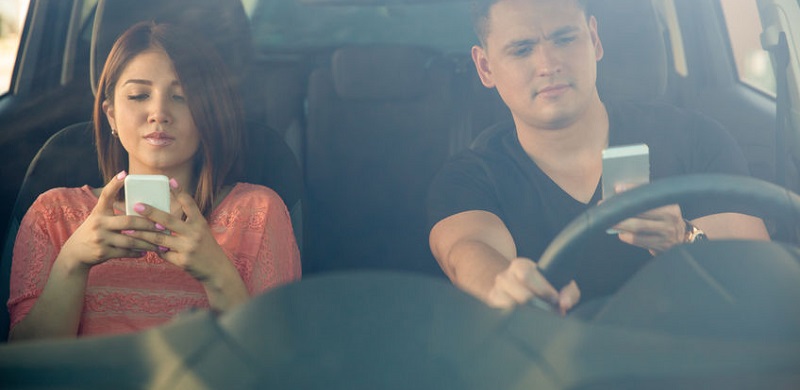In 2016, a national study showed that at any given time during daylight hours, some 481,000 people who are driving at the time, are also using a cell phone. This distraction resulted in car accidents that killed 3,450 people and injured 391,000.
How Roadway Cell Phone Usage Inspired Hands-Free Laws and NHTSA Studies
According to the Centers for Disease Control and Prevention, more than 1,000 people are injured, and nine people are killed every day due to distracted driving. What is the number one distraction? Cell phones. Because phones are causing more and more accidents, states are now cracking down even harder on their use when behind the wheel of a vehicle; some say, it’s about time.
Some States Have Strict Hands-Free Driving Laws
In early July, Georgia enacted a hands-free law making it illegal to drive while holding a cell phone. The law outlines very specific limitations on use if you are driving, including a section of the law that notes a driver can only use earpieces to communicate via cell. The law goes further, noting that it’s illegal to use earbuds or any listening device to hear music or other entertainment features.
What prompted this strict enforcement? According to outlined information, Georgia officials note that the state has seen a significant increase in auto accidents killing and injuring more people than ever. In addition, Georgia is seeing an increase in rear-end crashes by young drivers; authorities note that distractions are the main cause of those accidents. All of this prompted Georgia to join 15 other states with a strict hands-free law.
Colorado has not implemented a hands-free law but does have strict laws on texting and driving. There are even more stringent laws when it comes to cell phones and young drivers, which is a good thing since this age group has an ever-growing problem with distracted driving.
Nearly 96 percent of young drivers have a smartphone.
Statista, a leading provider of consumer research, conducted a 2018 study on cell phone ownership which showed that when it comes to consumers age 18-29, nearly 96 percent of them use a cell phone. For those age 30-49, nearly 93 percent of them have a cell phone, and even among older consumers, those 50-64, nearly 73 percent of them have a cell phone. Having a cell phone is not a bad thing until you consider the rest of the facts.
In 2016, the National Highway Traffic Safety Administration (NHTSA) noted that at any given time during daylight hours, around 481,000 people are driving and using their mobile device at the same time. According to NHTSA, 3,450 people were killed and 391,000 were injured in crashes as a result. Though states are now implementing hand-held laws to try and prevent such accidents, hands-free is not, according to the National Safety Council (NSC), risk-free. NHS notes that every day 100 people die in car crashes and the number one factor in those crashes, is distracted driving.
Brains Cannot Multi-Task and Drive
While multi-tasking is a staple of modern life, safety officials say multi-tasking and driving is a recipe for disaster. Despite popular opinion, your brain is unable to handle multi-tasking safely when driving; the area of your brain that processes moving images, such as other vehicles or pedestrians, decreases when listening or talking on the phone. According to NSC, if a driver is talking on a cell phone, he or she will miss seeing as much as 50 percent of what is happening around them. That’s why NSC is taking the “free” concept to an entirely new level, and it’s asking all drivers to take a pledge to drive cell-free. Everyone should take up the pledge in order to protect roadways around the country.

